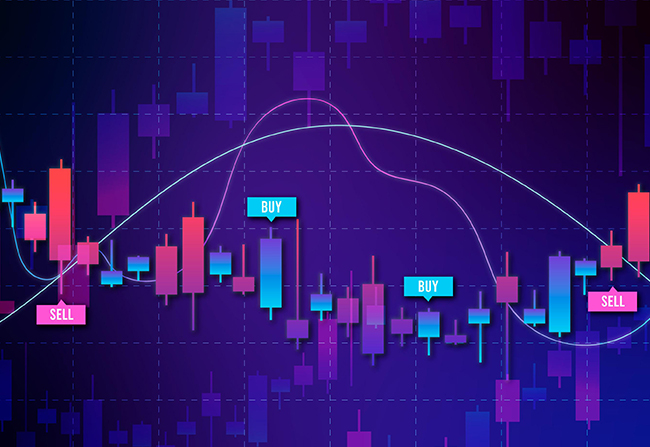
One of the greatest challenges traders face is managing drawdowns—periods of losses that occur after a series of profitable trades. A drawdown is a natural part of trading, but how a trader handles it can make the difference between long-term success and failure. Understanding how to manage drawdowns and remain consistent is crucial for anyone who wants to be successful in the markets.
A drawdown represents a decline from a peak in your account balance to a trough, and it can be caused by a variety of factors. Losses are inevitable, but a trader’s ability to control risk and maintain a clear mindset during these challenging periods is key to weathering them successfully. By incorporating sound risk management strategies and focusing on the bigger picture, you can protect your capital and continue your trading journey.
What is a Drawdown and Why Does it Happen?
A drawdown occurs when a trader’s account balance decreases after a series of losing trades. It’s a normal part of trading, as no trader wins every trade. However, the size and duration of a drawdown can vary depending on the trader’s strategy, risk management techniques, and market conditions.
Drawdowns happen for several reasons, including poor trade execution, high-risk exposure, market volatility, or using an overly aggressive strategy. The key is not to avoid drawdowns entirely (which is impossible), but to manage them effectively so they don’t wipe out your account or derail your progress.
The Psychological Impact of Drawdowns:
One of the hardest parts of experiencing a drawdown is the psychological impact. Traders often feel discouraged, frustrated, or even fearful of continuing to trade after a string of losses. This can lead to emotional decision-making, such as chasing losses or abandoning a strategy that was previously working.
It’s important to understand that drawdowns are part of the learning process. Every trader, regardless of experience, will go through periods of losses. The key is to avoid letting these setbacks affect your overall confidence and approach. A calm and rational mindset will help you manage drawdowns without making hasty or impulsive decisions.
Risk Management Strategies to Prevent Large Drawdowns:
Risk management is essential to controlling the size of drawdowns. There are several key strategies that traders can use to protect their capital and minimize the effects of a drawdown.
Set Stop-Loss Orders:
A stop-loss order is a predetermined price at which you’ll exit a losing trade to limit your losses. By setting stop-loss orders before entering a trade, you can protect yourself from significant losses if the market moves against you. This prevents the emotional impulse to hold on to a losing trade in the hope that it will reverse.
Use Proper Position Sizing:
Position sizing is the process of determining how much of your capital you should risk on each trade. A general rule of thumb is to risk no more than 1-2% of your trading capital per trade. By limiting the size of each position, you reduce the impact of any single loss on your overall account balance.
Diversification:
Trading multiple assets or using different strategies can help reduce risk and prevent large drawdowns. Diversification spreads your risk, so a loss in one market or asset doesn’t have as significant an impact on your overall portfolio.
Accepting Drawdowns as Part of the Process:
The most successful traders are those who can accept that drawdowns are a natural part of the trading process. Every strategy, no matter how well-designed, will experience periods of loss. Rather than trying to avoid them, the key is to manage them effectively.
For example, a trader who risks 1% of their capital per trade might experience a drawdown of 10% after losing 10 trades in a row. While this is uncomfortable, it’s not catastrophic if the trader has enough capital left to continue trading. The important thing is to remain focused on your overall strategy, rather than being fixated on short-term losses.
Staying Consistent During Drawdowns:
Consistency is crucial to long-term success in trading. While it’s easy to feel discouraged during a drawdown, it’s important to stay committed to your trading plan. Here are a few ways to maintain consistency:
Stick to Your Plan:
Trading plans are designed to guide you through both profitable and challenging periods. During a drawdown, it’s essential to stick to your plan and resist the urge to make drastic changes based on short-term losses. Making impulsive changes can lead to even greater losses.
Take Breaks When Needed:
If you’re feeling overwhelmed or frustrated, take a break. Stepping away from the market for a short period can help you clear your mind and reset your emotions. Returning to trading with a fresh perspective can help you make more rational decisions.
Focus on the Long-Term:
Drawdowns are temporary, but consistent profitability is achieved over the long term. Focus on your overall trading goals and remember that every trader experiences losses. Keep your eyes on your long-term goals, and don’t let short-term setbacks derail your progress.
Learning from Drawdowns!
Instead of viewing drawdowns as failures, treat them as opportunities for growth and learning. After each drawdown, take the time to analyze your trades and identify any mistakes or areas for improvement. Reflecting on your trading decisions can help you avoid repeating the same errors in the future.
Moreover, drawdowns can be a sign that it’s time to adjust your strategy. If you consistently experience significant drawdowns, it might indicate that your risk management practices or trading strategy need to be reevaluated. Continuously learning from your experiences will make you a more resilient and adaptable trader.
Conclusion:
Managing drawdowns is an essential part of trading that every trader must learn to handle. While they are an inevitable part of the trading process, drawdowns don’t have to lead to disaster. By implementing strong risk management practices, maintaining emotional discipline, and focusing on long-term consistency, you can weather these periods without losing confidence.
Remember, no trader can avoid drawdowns altogether, but how you handle them determines your success in the markets. Accept drawdowns as part of the journey, use them to improve your strategy, and always remain focused on your long-term goals.




